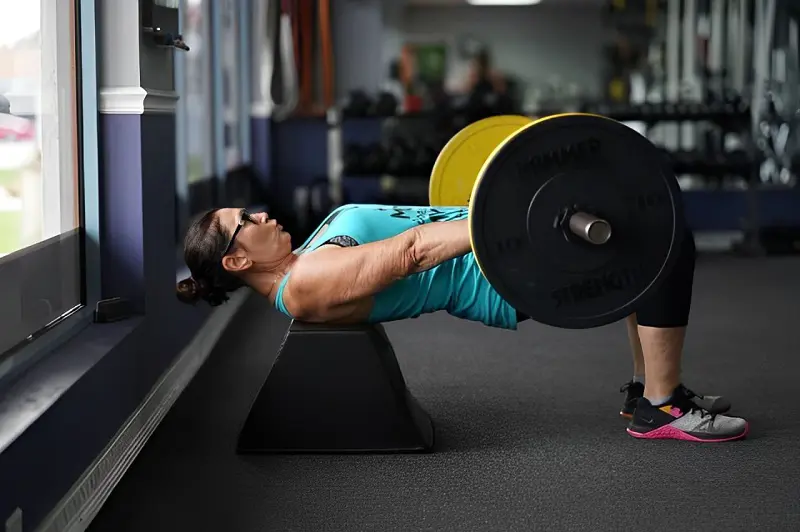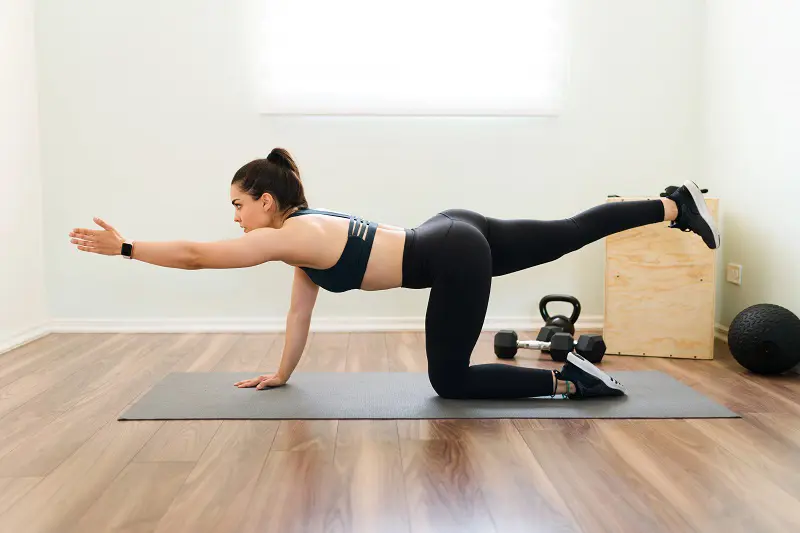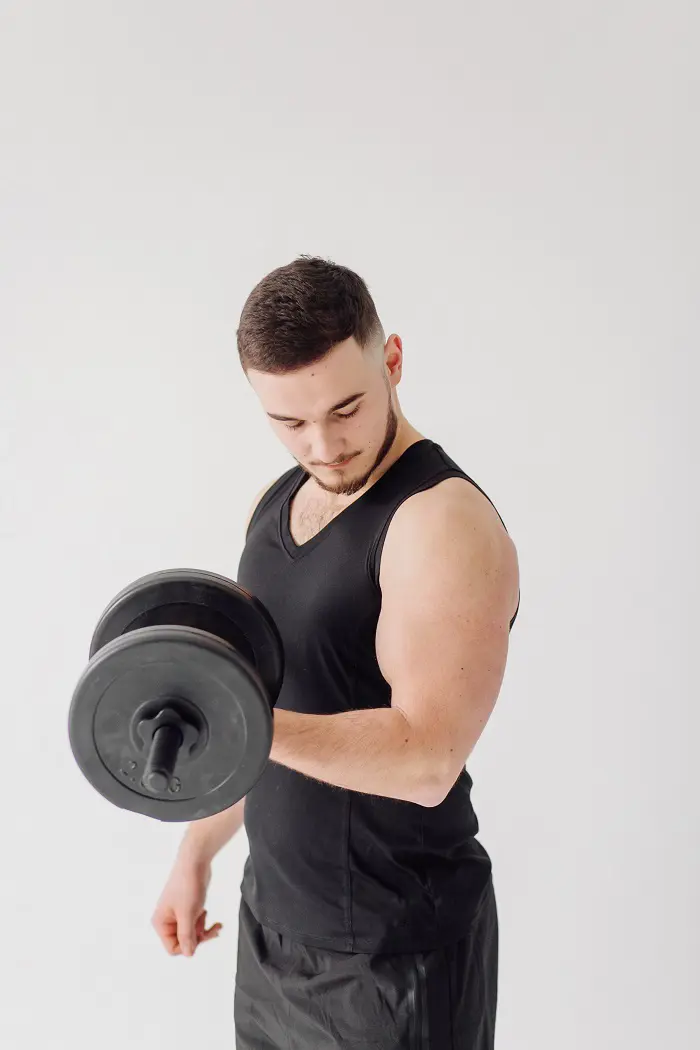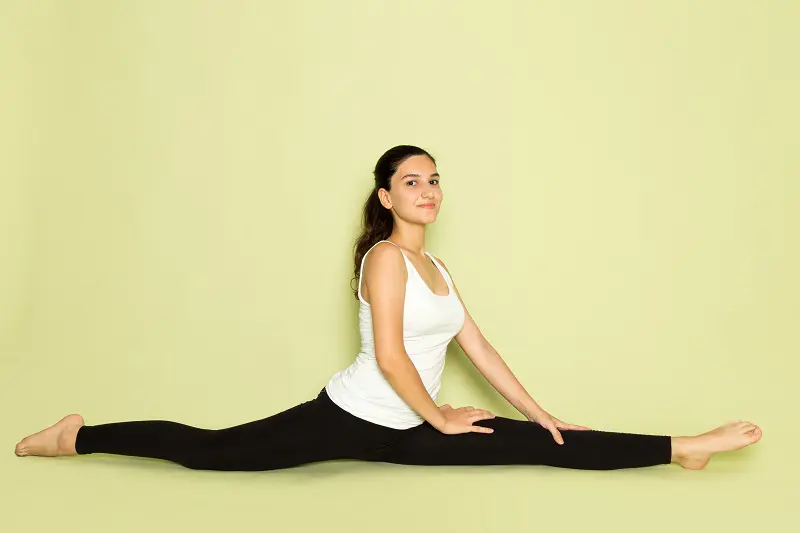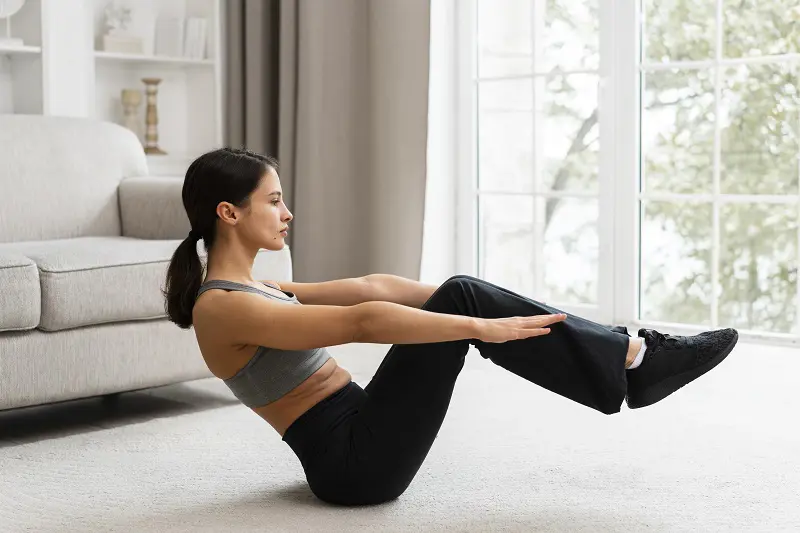How To Do Lunges? Benefits, Variations And Muscles Worked
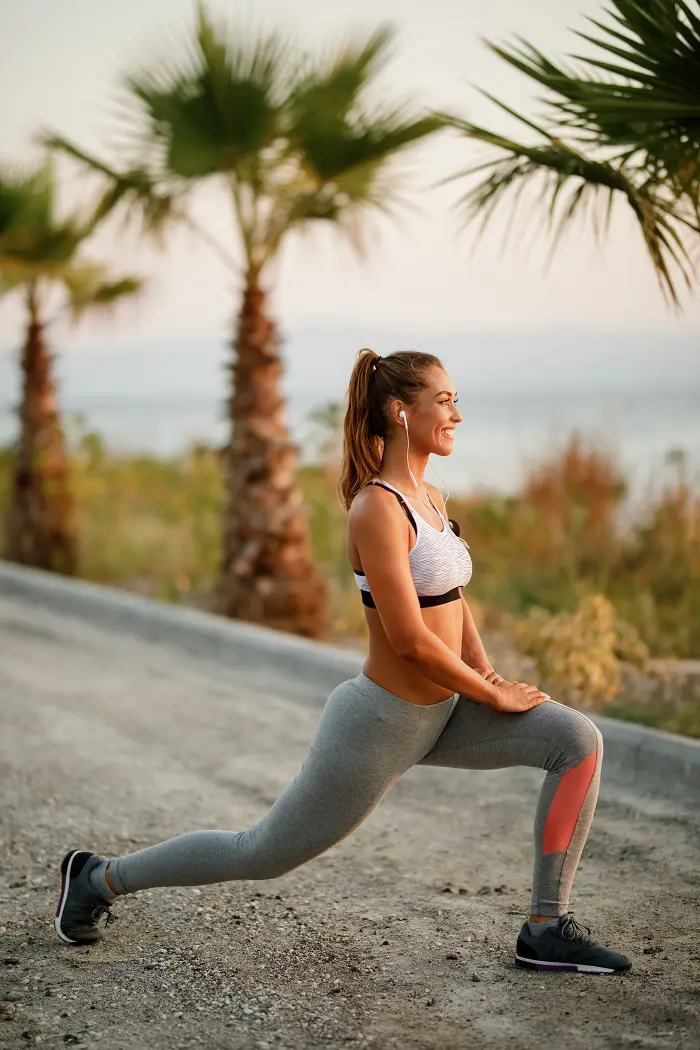
Lunges means to lengthen in French. Well, this word represents an exercise involving marching forward, lowering the body toward the ground and returning to the initial position. This may appear simple but this workout is essential to increase stability and flexibility of the lower body.
Interestingly, this workout can be done in various methods that help you get the brilliant muscles worked. So, let's discuss how to do lunges with its benefits and variations.
How To Do Lunges: Step-By-Step Guide
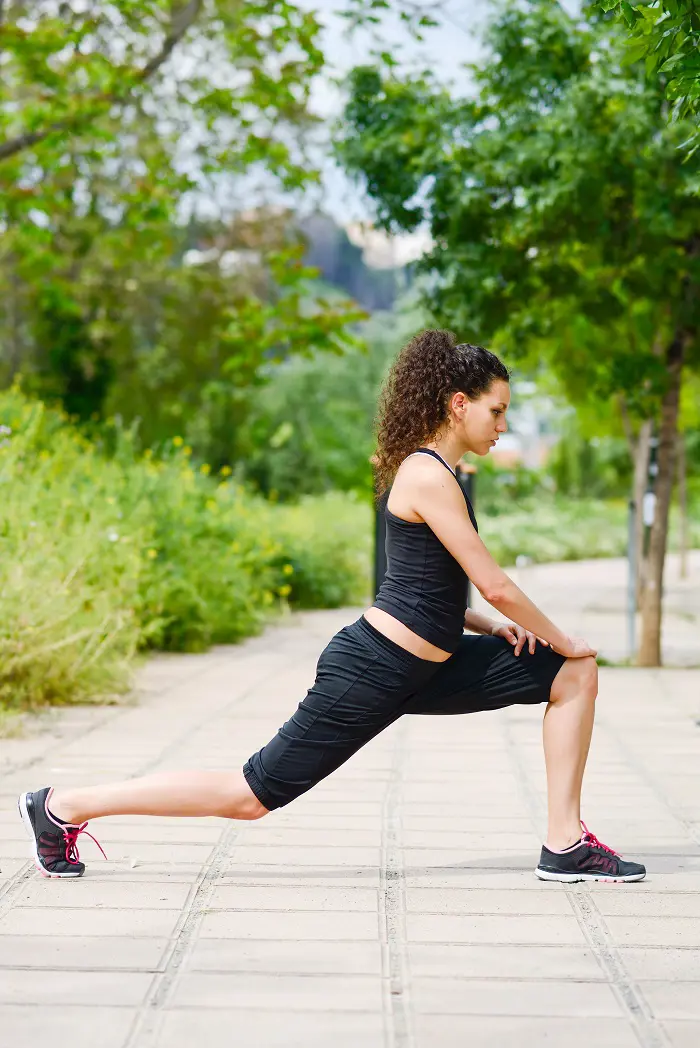
Lunges are powerpack exercises that let you strengthen your muscles and lower body thereby giving a perfect abs. Moreover, you don't need any equipment or other materials to conduct the classic lunge.
You can do this exercise at home if you get the right instructions. Here is a proper guidance, have a look:
- First of all, you need to stand in a split stance and then put your right foot at 2 to 3 feet in front of the left foot.
- Make sure your torso is straight and your shoulders are back and down. Also, your hands must be resting on your hips with your core being engaged.
- After that, bend your knees and lower your body until your back knee remains a few inches from the ground.
- At the base of the movement, the front thigh should be parallel to the ground and the back knee should point toward the floor.
- Make sure your weight is evenly distributed between both legs.
- After that, kindly push back up to the initial position. While doing so, you need to keep your weight on the heel of the front foot.
How Many Lunges A Day?
After you have learned the proper guidance, it is necessary to have an idea about the number of lunges you can do in a day. Since it is a powerful exercise that includes heavy muscle work, you must be aware of the performance frequency.
Well, there is no specific number of lunges for a day, it is totally dependent on the strength of a performer. Depending on the stamina of a person and his/her requirement, the number of lunges varies.
As per the fitness experts, you can do about two to four sets of 8 to 12 repetitions a day. If you are working out more than this, then you should definitely consult a doctor or fitness expert.
Lunges Benefits
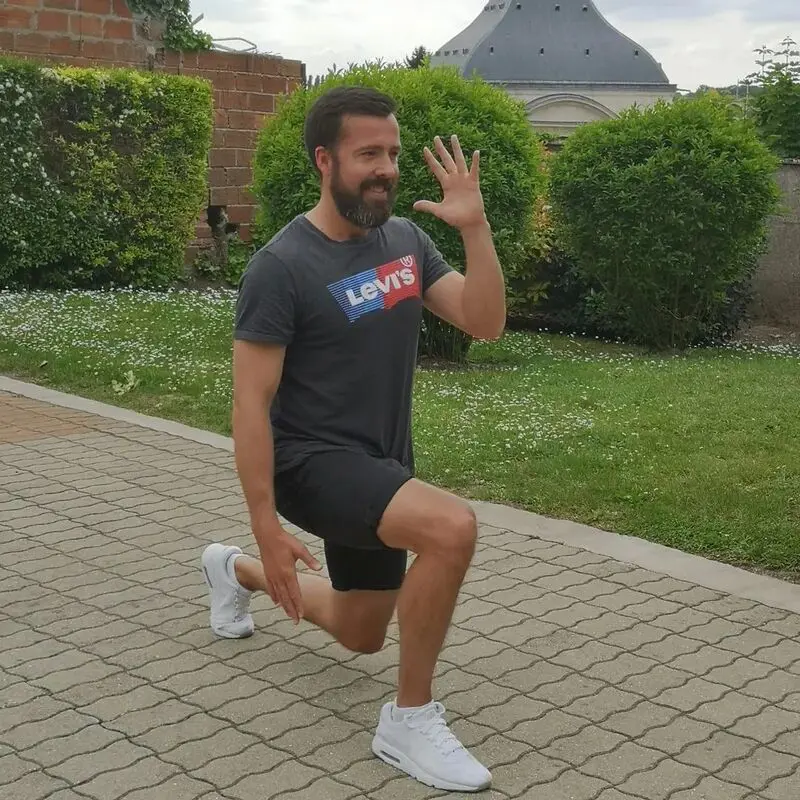
This powerful workout not only helps you increase your balance and stability but also assists you in keeping sound health. It can be a perfect idea for your daily healthcare routine.
Without costing much time and effort, you can achieve many advantages through this exercise. Here are the benefits of lunges:
1. Balance and Stability
If you do lunges regularly, you will feel a balance and stability in your body. Since this is a lower-body workout, there will be movement of a single leg and balance on the other leg. This helps you upgrade your balancing capacity.
Not only that, your core and spine start performing as you are standing on a single leg. This makes an increment in your stability level.
2. Weight Loss
Losing weight is perhaps the most difficult task as it requires sweating a lot in the gym, running, walking for a long time as well as giving up your favorite food. If you are worried about losing weight, then you should give lunges a try.
This lower body exercise works on the thick muscles and helps in the formation of lean muscles. This ultimately reduces the body fat. You should try this workout daily to lose weight fast.
3. Stand Taller
This workout strengthens your back and core muscles without making you put so much stress or strain on your spine. Similarly, a strong, stable core lessens the chance of injury thereby improving the body posture. Also, this makes basic movements quite easier.
4. Help in Long Term Sitting
While doing lunges, your hip flexors are stretched which improves their flexibility. Not just that, this prevents the shortening and tightening that often happen when you sit for a long time.
In today's world, where technologies are replacing all physical activities, this exercise works best for your continued sitting assignments.
5. Functional Exercise
Regular lunges make your body active and flexible which literally helps you perform various day-to-day tasks smoothly and quickly. You will be able to pick anything without getting worried about back pain or muscle stress.
Kindly add lunge variations to your daily fitness routine and see the magic. You will surely love the flexibility and stability improved as an output.
Lunges Variations
Lunges have been in practice since the 18th century. This exercise has evolved to become more powerful and beneficial over time thanks to its variations which are designed for specific needs of the performer. Here are some of the lunge variations:
1. Half Lunge
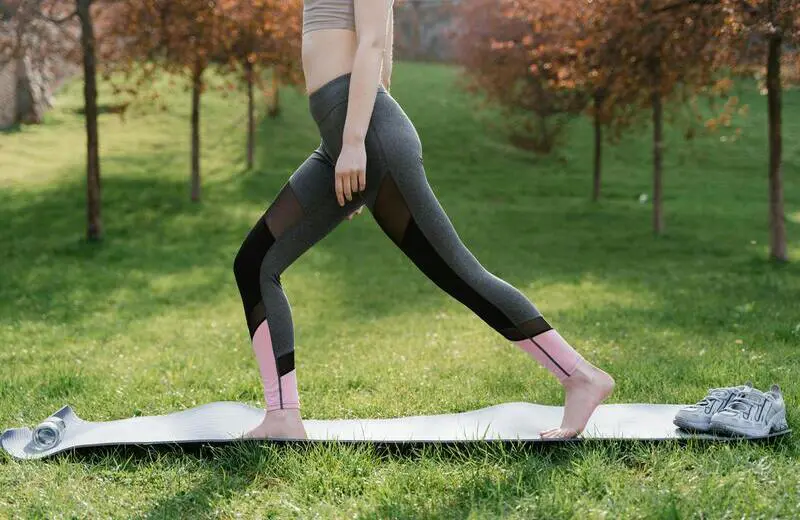
The name itself speaks aloud that this variation includes only half the range of motion. Yes, this workout requires lowering down only half of your body and terminating well before your front knee becomes a 90-degree angle. With this lunge variation, you will get a perfect result without much stress on your knees.
2. Dumbbell Lunge
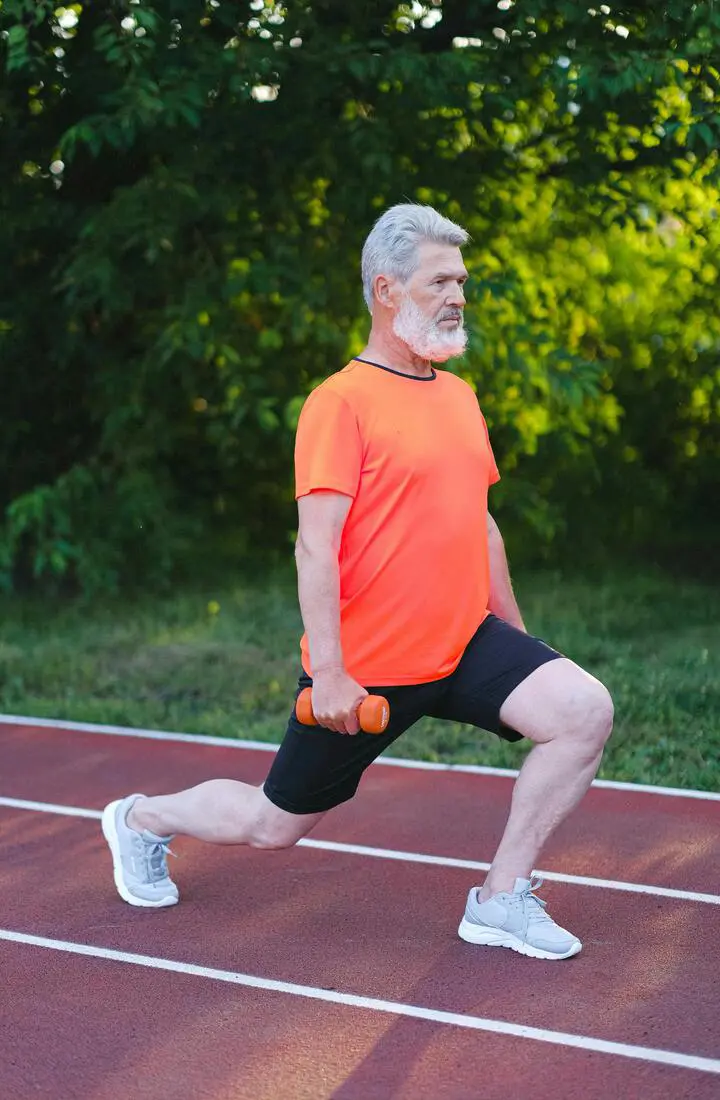
In this variation, all you need to do is just add the intensity of a dumbbell. It means now, you will move with a dumbbell in each hand and your arms should hang on your side. For an effective result, you should start with lightweight and then gradually move to the heavier one.
3. Assisted Lunge

Assisted lunge allows you to have some balance during the movements. Actually, you need to use either a chair or any other assisting tool in this variation.
You can put your palm on that assisting tool while doing lowering and raising activities. Such a tool helps you give a steady posture during the motion.
4. Forward Lunge
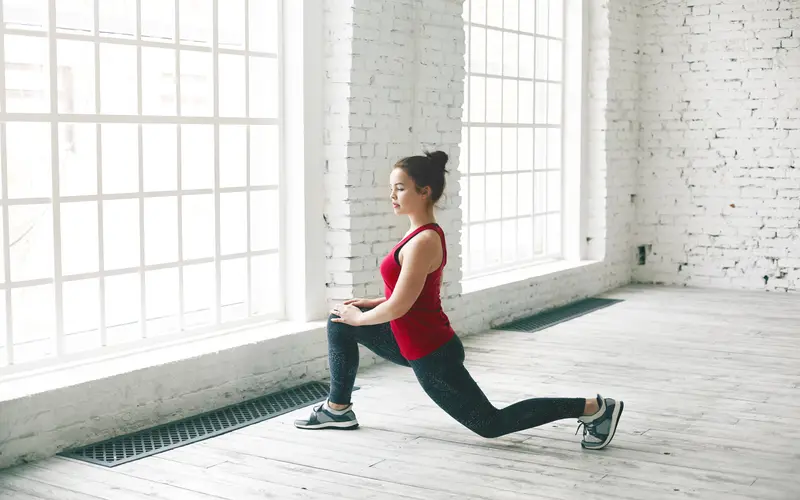
This lunge variation requires you to stand straight at first, then make a large step forward. After that, you should lower your body until your front thigh becomes parallel to the ground. Your front knee should stay over your toe pressing through your heel so you can get back to your previous position.
Do you know that you can do this workout holding a dumbbell in each hand? This technique requires more strength, so it is advisable to do so once you become a master in basic lunge.
5. Side Lunge
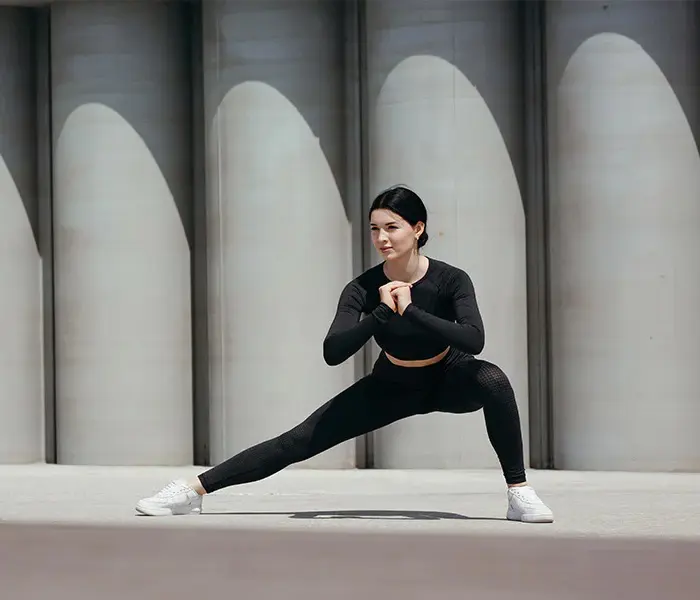
This variation will tell you more about how to do a lunge. It targets mainly your inner thighs, hips, and glutes. Similarly, you can do this easily by standing at the feet together at first. Then, taking a wide step out to the right.
After that, you need to bend your right knee and lower your body down. While doing so, make sure your front knee doesn't extend past your toes. Then, kindly straighten the right leg and take a back step to the starting position.
6. Low Lunge
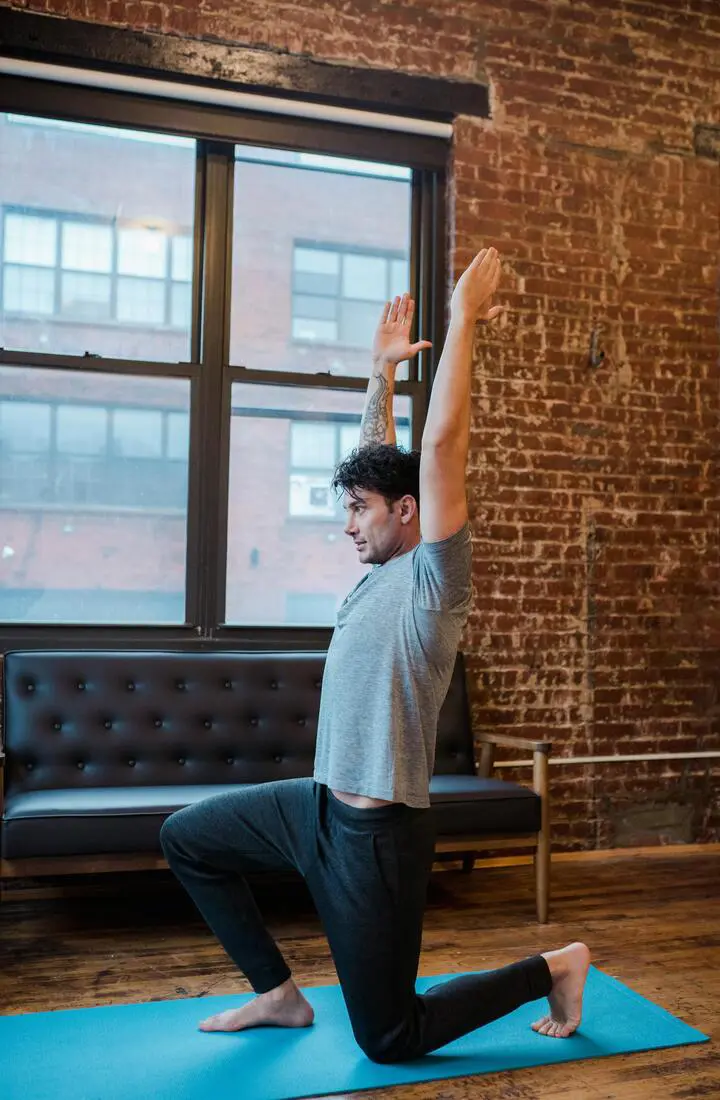
This lunge variation requires a tighter and smaller move. Here, the glutes, core, and thighs of a front leg work together. You can do this workout by stepping with your back foot as far back as you can, then bending your front knee to lower your body.
Make sure you have kept your back leg straight. Then, straighten your front leg and return to the starting state. Isn't that simple and effective? You must try this workout at home to get a brilliant result.
What Muscles Do Lunges Work?
Lunges primarily target the gluteals, quadriceps, and hamstrings. These muscles work together by lengthening themselves during the eccentric phase ( while lowering to the ground) and they contract again during the concentric phase (while returning to the starting position).
1. Gluteals
The gluteal muscle is a fundamental match of the lower limb that works during all weight-bearing activities. Also, it prevents your knee from rolling inwards toward the big toe, which means these muscles when kept in balance help decrease the risk of injury.
In addition, these muscles contribute to building strength in the buttocks and hips so that there will be support in the lower back. This also helps to overcome back pain.
2. Quadriceps
Another key muscle that the lunge includes is the quadriceps. These muscles are steadily immersed as you bend your knees to lower your body towards the ground.
Also, the movement further activates the quadriceps to make your knee joint stable. With these features, this muscle supports the lowering phase of the lunge workout.
3. Hamstrings
Well, the hamstrings work as a dynamic stabilizer when you move your knee joint during the lunge workout. Its primary role remains to make the process more effective and smooth.
Similarly, this muscle is found working together with gastrocnemius while carrying out its role in the lungs.
Common Mistakes To Avoid
Since lunge is an effective and reliable workout technique for your lower back health, you should do this regularly. However, doing this in the wrong way may cause you health issues as well as waste your time.
Here are some of the common mistakes that you need to avoid to get the desired output in lunge:
1. Taking Too Small or Too Large Step
You need to be aware of taking too small or too large steps while doing this workout. This is a common mistake that people make being unaware of the steps as per their leg length and motions.
When you use a large step in a lunge, you will feel more stress on your knee joint while small steps inactivate your glutes and hamstrings. Hence, you must take the right steps uniformly throughout the workout.
2. Letting the front knee cave in or out
While performing lunges if you let your front knee cave in or out then there will be a high chance of stressing your knee joint. This doesn't give you a positive result, instead, it causes pain in your knee areas. So, make sure you do not let your front knee move frequently in or out.
3. Stance Too Close or Wide
Close stance in lunges helps you strengthen your front thigh muscles. However, a stance too close or too wide gives the opposite result. A wide stance often results in the inward angling of your back knee which later creates pain in your knee joints and muscles.
4. Neglecting the back leg
While doing lunges always make sure you focus on your back leg. Gently pushing through a heel, you can create stress or force over your leg. This makes your lunge exercise smooth and effective.
Interestingly, you will get more balance and stability while engaging your back leg in lunges. Hence, you should never forget to engage your back leg in lunges.
5. Repeating the Same Lunge Always
As we have mentioned in the earlier segment, there are various lunge exercises that you can try to get many health benefits. These variations work specifically for different organs, offering different health benefits.
It means you should try different variations while performing lunges instead of doing the same move again and again.
Recent posts
How To
How To
How To Do Hip Thrusts: Methods, Benefits And Types
The hip thrust is a great bodyweight move for building strong glutes and a solid core. Also called the hip thruster, it’s great for improving posture and easing lower back pain. To get the most out of it, nailing the form is key. Everything fro...
How To
How To Do Bird Dog Exercise? Techniques, Types And Benefits
If we want to enhance core strength and spinal stability, Bird Dog is a fantastic bodyweight exercise to include in any workout routine. It activates various muscle groups like abdominals, glutes, and erector spinae. The movement itself isn’t t...
How To
How To Do Bicep Curls And Develop Stronger Arms
Bicep curl may be the first weight-training exercise we’ll learn during our fitness journey. Sure, it’s about moving a dumbbell up and down, but there’s more to it - it’s a solid strength builder and a great method to define t...
How To
How To Do Lat Pulldown? Methods, Benefits And Types
Doing a lat pulldown is not hard - it's all about maintaining proper momentum and pulling the bar toward our upper chest. This popular exercise is fantastic for engaging our back muscles, particularly the latissimus dorsi. Getting the form right is k...
How To
A Proper Guide On How To Do The Splits For Beginners
Learning how to do the splits is the ultimate goal for every gymnast and fitness enthusiast. Spreading the legs to a 180-degree angle is a true testament to athletic power and flexibility. As a beginner, it might feel intimidating at first, but with ...
How To
A Guide On How To Measure Your Waist Correctly
Measuring an individual’s waist is crucial for assessing internal fat deposits that surround the heart. It can indicate a person’s current health status, with a larger waistline suggesting a higher risk of heart disease and stroke. Along ...
